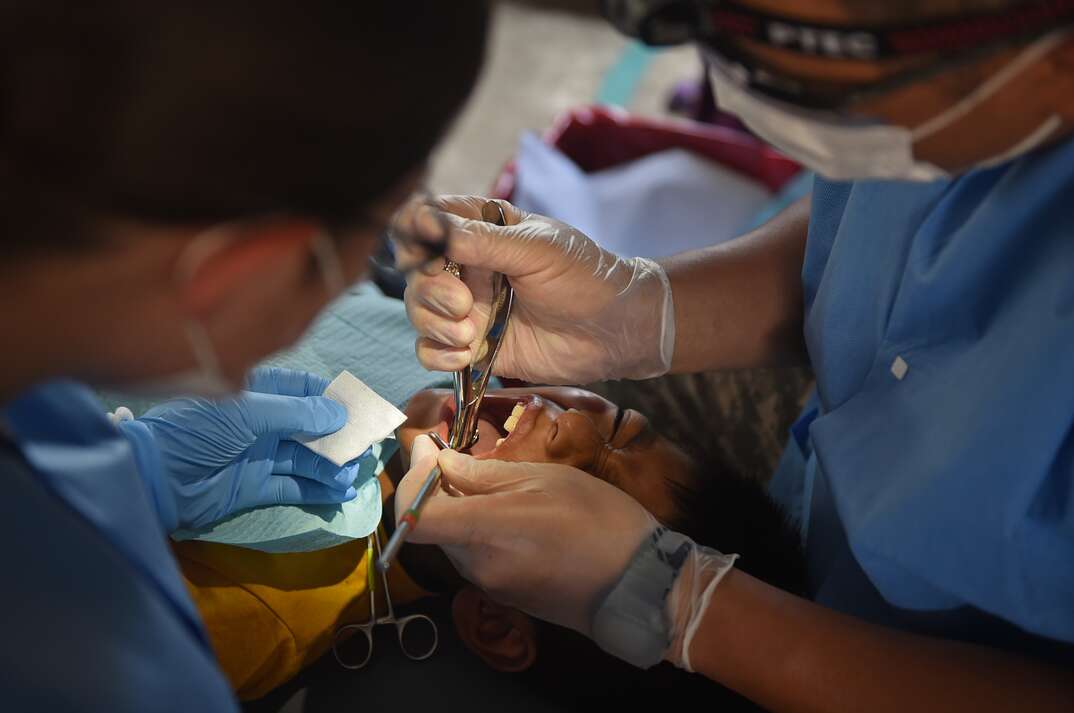- AppliancesElectriciansHVACLandscapingLocksmithPest ControlPlumbingRenovationRoofingT V RepairAll Home Improvement
- Car AccidentClass ActionCorporate LawCriminal DefenseDivorce LawEmployment LawFamily LawFinancial LawLegal AidMedical Injury LawyersMedical MalpracticeReal Estate LawWater Fire RestorationAll Legal
- InvestmentRetirementAll Finance
- Animal InsuranceAutoGeneral InsuranceHealth PolicyHome RentersAll Insurance
- DentalHealth SpecialistsAll Medical
- Animal CareVeterinaryAll Pets
- Auto GlassTowingAll Automotive
What Happens During a Tooth Extraction?

Remember when you had a loose tooth as a kid and couldn't stop wiggling it to pull it out? That type of tooth loss came with some shiny new coins from the tooth fairy, so it wasn't all that scary.
As an adult, a tooth extraction can ignite your fear of the dentist like wildfire. Preparing yourself by understanding what happens after a tooth extraction and what the tooth extraction healing process is like can make it a little easier to handle.
A tooth extraction usually happens if you have a tooth that's severely damaged or decayed and can't be repaired. Sometimes, teeth get pulled to make room for your other teeth if your mouth is a little too crowded. Regardless of the reason, the process is similar. The steps typically include:
1. Assessment: Initially, the dentist will assess the situation to determine the best course of treatment. This usually involves having X-rays taken, which helps the dentist plan the tooth extraction.
2. Anesthesia: Your dentist will numb the area, usually with a local anesthetic. If you have dental anxiety, they might use stronger sedation methods to help you stay calm. In complex cases, general anesthesia might be recommended.
3. Tooth loosening: When you can no longer feel anything around the tooth, your dentist will start to loosen it for easier removal using specialty dental tools. Teeth that don't come out easily might require the dentist to make tiny incisions in your gums to make the removal easier. Another technique that's sometimes used is sectioning, where the tooth is cut into smaller sections to remove it all.
4. Tooth removal: The dentist uses dental forceps to pull the tooth out of the socket once it's loose enough.
5. Cleaning and disinfecting: With the tooth out of the way, the dentist cleans and disinfects the empty socket to prevent an infection from taking root.
6. Stitches: Placing stitches in the area is a possible final step in the tooth extraction procedure. Dentists sometimes do this to help with the healing process.
Talking with your dentist can give you a better idea of what to expect. Everyone's experience is different, and dentists might use slightly different tools and techniques to remove teeth. Ask your dentist to explain what they'll do and ask any questions you have to help you feel better about the dental procedure.
More Related Articles:
- How Often Should You Go to the Dentist?
- Do Dentists Offer Payment Plans?
- Everything You Need to Know About Emergency Dentists
- How Much Does a Dental Cleaning Cost?
- How Much Do Dentures Cost?
What Is the Aftercare Process Like?
You can expect your dentist to place gauze in your mouth after the procedure, which you might need to keep in place until the bleeding slows or stops completely. Always follow your dentist's specific aftercare instructions, which focus on controlling pain, promoting healing and preventing infection.
The numbness from the local anesthesia could last for a few hours after the procedure. That's when some pain could set in. Your dentist should recommend the type of pain reliever to use and how often you should take it. Sometimes dentists offer prescription pain relievers or antibiotics.
Icing the area can also help ease the pain and cut down on swelling. Wrap ice with a towel or use a cold pack on your cheek. You may also need to cut down on physical activity and smoking while the area heals.
Your dentist might tell you to rinse the area with salt water or antimicrobial mouthwash to help keep it clean. Otherwise, you should generally avoid touching the area where the tooth was removed for several days. You can brush and floss the rest of your teeth, but avoid the socket until you get the green light from your dentist.
It could take two or three days to feel better after the procedure. If you have excessive pain, swelling, bleeding or other concerning symptoms, call your dentist.
You can typically eat on the same day as the procedure, although you'll need to modify your diet temporarily. Waiting until the numbness wears off makes it easier to eat without biting your tongue or burning yourself with hot food.
For the first day or two, stick with foods you don't have to chew. Examples include protein shakes, smoothies, yogurt, gelatin, ice cream and pudding — though refrain from using straws to prevent dry socket. In the next few days, most patients can start to eat softer foods that require minimal chewing, such as well-cooked noodles, ground meat, eggs, soup and soft veggies. From there, see how you feel and gradually introduce more of your regular foods that might require more chewing.
Elocal Editorial Content is for educational and entertainment purposes only. The information provided on this site is not medical advice. Editorial Content is not intended to be used for diagnosis or treatment. We are not physicians or a substitute for advice from a physician. The opinions, beliefs and viewpoints expressed by the eLocal Editorial Team and other third-party content providers do not necessarily reflect the opinions, beliefs and viewpoints of eLocal or its affiliate companies. Use of the Blog is subject to the
Website Terms and Conditions.The eLocal Editorial Team operates independently of eLocal USA's marketing and sales decisions.



